The Giants are six games into the regular season and look good at 5-1 (compounded by Tim Lincecum being 2-0, with another brilliant, seven-inning, 10-strikeout performances in a 6-3 win tonight).
However, while the Giants pitching has been solid so far, it has been a very different story offensively after the first two series of the year against the Astros and Braves.
Sans Edgar Renteria's 5-for-5 explosion in the third game of the Astros series, 3-for-5 home debut (including the game-tying home run in the bottom of the ninth) and Pablo Sandoval's 3-for-4 breakout today against the Braves pitching staff (which included a two-run blast in the eighth inning), the Giants offense, for the most part, has been meager.
And the new acquisitions haven't helped sway that opinion much either.
Despite hitting a home-run on Opening Day, Mark Derosa hasn't displayed much power at the plate (though he has drawn five walks and is sporting a .391 OBP despite his .222 batting average).
And Aubrey Huff? Well, in comparison to Derosa he has looked like Juan Pierre. His line in six games is a .217 average, a .308 OBP and a .217 slugging with zero home runs and no extra-base hits.
Yeesh...not exactly making Giants fans comfortable that he can get back to 2008 form, right?
Well, while it may be a long shot that Giants fans will see the same Aubrey Huff that hit 32 home runs and drove in 108 RBI while sporting a .304 batting average and a .912 OPS in 2010, it is possible Huff might develop into a different mold this season.
After watching Huff for six games (as well as following his numbers in Spring Training), I get the feeling Huff is pretty much a reincarnated version of Sean Casey.
Now, there are both positives and negatives with this comparison.
In terms of the positives, like Casey, Huff so far has proven to be an efficient hitter, especially in terms of plate discipline
In Casey's last four seasons (2005-2008), he posted a BB/K ratio of 1.00, 0.77, 0.93, and 0.68. He never posted a strikeout rate over 12.6 percent (which occurred his last year in 2008 in Boston), and he stayed around the 25 percent league average in terms of swinging at pitches outside the strike zone. Also, Casey showed a great ability to make contact at the plate, as his contact rates his last four seasons were 90.6 percent, 88.5 percent, 89.8 percent, and 89.2 percent.
Huff unfortunately strikes out a little more than Casey (From 2006-2009, his strikeout percentages were 14.1 percent, 15.8 percent, 14.9 percent, and 16.2 percent), but for the most part his BB/K ratios have been solid (0.78, 0.55, 0.60, and 0.59 from 2006-2009), like Casey. After five games in 2010, Huff's BB/K ratios have been stellar at 1.00 (thanks to a 9.1 walk percentage and 10.0 strikeout percentage) and it wouldn't be surprising to see Huff finish the year in that category in the 0.60-0.75 range (the league average is usually around 0.50).
In terms of swinging outside the strike zone in comparison to Casey? Huff isn't much better. His lowest percentage in the last four years was 22.5 in 2006, while his highest was 26.9 percent last year. That being said, those percentages aren't alarming either. To put it in perspective, Pablo Sandoval swung at 41.5 percent of pitches outside the strike zone.
When compared to Sandoval, Huff looks like Nick Swisher.
So Huff is going to be a disciplined hitter at the plate. He is going to draw a good amount of walks (not great by any measure, but good), will make contact (he's never been under 80 percent in terms of contact rate) and won't strike out a whole lot either. Casey did that in his career in Cincinnati, Pittsburgh, Detroit and Boston, and I think it's safe to expect the same from Huff in San Francisco.
Unfortunately though, being compared to Casey does have its downfalls.
For starters, Casey struggled with his power from 2005-2008. After slugging 24 home runs in 2004 with the Reds, he hit only 21 home runs the next four years COMBINED.
What caused Casey's drop in home-run hitting power?
He became primarily a groundball hitter during those last four years, as evidenced by his 1.76, 1.34, 1.38 and 1.10 GB/FB rates. To make matters worse, his flyballs didn't have any potency behind them. His HR/FB percentages from 2005-2008 were 6.3 percent, 6.8 percent, 2.9 percent and zero percent. (Big ouch in 2008!)
Huff has shown similar trends the last four years in the Majors. With the exception of 2008 (0.98 GB/FB ratio), Huff has been primarily a groundball hitter as well (1.23 in 2006, 1.21 in 2007, and 1.32 in 2009). And, while he hasn't suffered a huge drop in his HR/FB percentage like Casey, he has showed some inconsistency in that category as well (14.6 percent and 14.9 percent in 2006 and 2008; 8.5 percent and 9.1 percent in 2007 and 2009).
The biggest concern with Huff though? While Casey put up solid line drive percentages (meaning he made good contact) from 2005-2008 (he had a percentage under 20 percent once in that timespan, in 2005 when it was 18.9 percent), you can't say the same thing for Huff. Huff hasn't had a line drive percentage over 20 percent since 2003.
That's okay if the hitter has some speed or is a slap hitter expected to hit leadoff. Yet if that player is the team's cleanup hitter? Well...let's just say it doesn't make you sleep well at night as a Giants fan.
Overall, there are positives and negatives with the Casey comparison. Huff will be a safe hitter in the lineup, as he won't strike out a ton and he will be a good bet for putting balls in play (and that could be a good thing if he gets lucky). In the grand scheme of things, he is an upgrade over Bengie Molina, last year's cleanup hitter.
However, I have a feeling that like Casey, Huff will struggle to hit for power and will continue to be susceptible to hitting more groundballs than line drives and fly balls (his line drive rate is 11.1 percent after five games in 2010; his groundball rate is 44.4 percent).
He could have a batting average in the .280 range and an OBP in the .340-.350 range, but in terms of power production, I would be surprised if Huff touched 20 home runs not to mention sport a slugging over .430 (and even that is generous).
That's not exactly what you want from your cleanup hitter, like I said before. However, if Giants fans can keep their expectations low, and think "Sean Casey" rather than "Aubrey Huff circa 2008," then I believe Giants fans will be satisfied with Huff's performance in 2010 with the Giants.
After all, while Casey wasn't a spectacular "Albert Pujols" hitter his last four years in the Major Leagues, he still happened to be a serviceable Major League player (his wOBA averaged .332 the last four years).
For a temporary, one-year player worth three million dollars (it could be worse contract-wise; we could have had Adam LaRoche for two-years, $17.5 million), a "Sean Casey 2.0" wouldn't be such a bad thing, especially considering this Giants offense.
Sunday, April 11, 2010
Is Aubrey Huff Another Sean Casey?
Labels:
2010,
Aubrey Huff,
Sabermetrics,
San Francisco Giants,
Sean Casey
Subscribe to:
Post Comments (Atom)




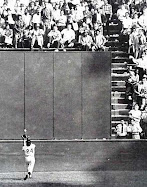
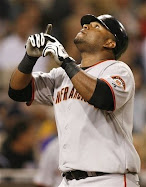
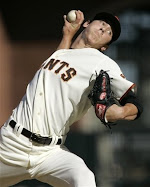
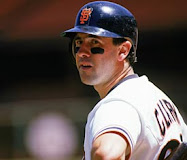
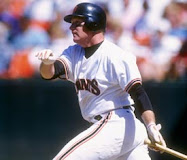
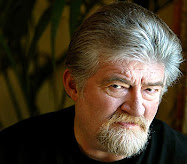

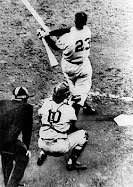
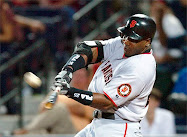
No comments:
Post a Comment